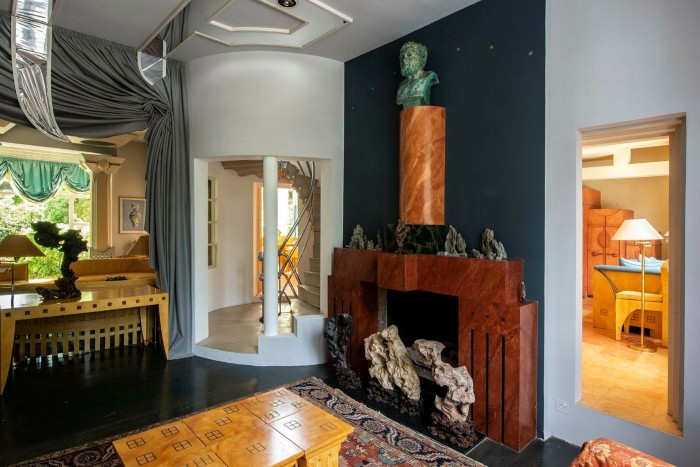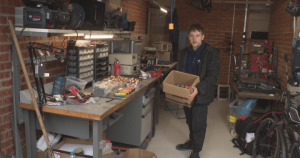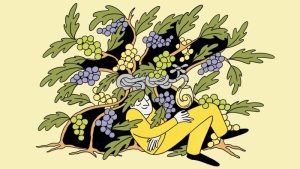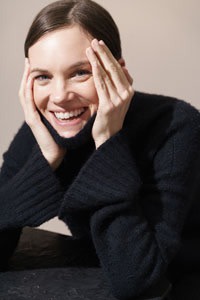Tim Burton should have stayed in the suburbs — interiors is where his power lies

Unlock the Editor’s Digest for free
Roula Khalaf, Editor of the FT, selects her favourite stories in this weekly newsletter.
Beetlejuice is a film about interior design. You might think of it as a story about a dead couple and an anarchic zombie, but really it’s about interiors.
The dead couple at the centre of the film, the Maitlands, are trapped inside their attic, just as the demonic Beetlejuice is trapped in his model purgatory, a miniaturised representation of their Connecticut village (actually filmed in Vermont), replete with cemetery and brothel. The house’s new owners, the Deetzs, are ripping out the period interiors and making the house into a pretentious postmodern fantasy. We are supposed to be on the side of the Maitlands, with their grandmacore decoration. But why? The problem can’t be gentrification — after all, the Maitlands are gentrifiers too. And the PoMo refurb is, frankly, not too shabby — blue neon back-lit glass bricks and a greenish fireplace (based on a Michael Graves design for Charles Jencks’ Cosmic House in London) which becomes a portal to another world. Pretty cool. In a way then, the interiors’ narrative is deeply conservative, about leaving things just as they are.
This week, an exhibition on Burton’s world opens at London’s Design Museum, which in part explores the large chunk of Tim Burton’s imagination that is occupied by architecture. From the candy-coloured suburbs of Edward Scissorhands through the brilliantly dark deco nightscapes of Gotham in his version of Batman, we can see how the director took a trip from the suburbs to the haunted mansion and somehow ended up at the twisted, trippy, hysterical toyshop that characterises his later movies and TV.

The exhibition begins, as did Burton himself, in the ‘burbs. Born in 1958, he grew up in an unremarkable single-storey house in Burbank, California. In that modest suburban home you can see what he has always been escaping from; the cold war paranoia; the mid-century consumerism; the Avon-Lady-Tupperware cultishness; the sameness — the things that all teens are so desperate to leave behind, knowing that they are somehow different.
Burton was, of course, different. His version of suburbia, notably that of Edward Scissorhands, is the apex of his horror. Not the haunted castle with its pointed towers that looms on the horizon, but the faux-jollity of the suburban houses in the close. There are hints of the repressed horror; the dinosaur topiary and the almost-matching coiffured dogs, but it is the grins, the nuclear 1950s tradwifeyness of the setting which makes it so deeply creepy.
He’s not alone. Other directors have gone full-tilt at the horror of the suburbs without resort to the more overt tropes of conventional horror. Think of David Lynch and the severed ear on the lawn in the title sequence of Blue Velvet or the riotous trash of John Waters’ suburban Baltimore, the setting for all his films. Think of Halloween, Poltergeist, or Jordan Peele’s gated sundown-town in Get Out. The horror is not ameliorated by a more realist representation, rather it is the suburbs-as-they-are that truly evokes the uncanny. Reality is always scarier. You can wake up from a nightmare.
Burton’s first short, Vincent (1982, with a brilliantly sonorous narration by Vincent Price) portrayed a misunderstood child struggling with gothic angst in his suburban home. It was precisely in the contrast between the everydayness of the interiors and the darkness of the lonely child’s imagination that the fun played out. That juxtaposition is where the director’s real power lies — not in the more recent excesses of drugstore-Halloween-gothic.

Burton’s divergence from the familiar into the acid-trip extremes of CGI and gothic caricature means his new film, Beetlejuice Beetlejuice, begins to resemble a Burton theme park, removed from the reality of domestic design. Not only this. he is now competing with AI creating more Burtonesque worlds than he can himself manage.
And beyond Burton, the house of horror has moved on. Now a scary movie is as likely to be set in a Brutalist housing estate (High-Rise or Attack the Block) or an industrial lock-up (the awful Saw series and its imitators) as it is in a suburban close or a spiky gothic castle. The claustrophobic feel of the house in Beetlejuice has faded, so the sequel spreads itself across an afterlife city — and the postmodernist makeover that made it so memorable has been excised (I did like the Christo-type black veil over the house though).
The affection in which the original Beetlejuice continues to be held is based very solidly on the idea of the house as both a site of aspiration and anxiety; something that is both an asset and a source of angst, something which can be taken away from you and, worse still, where the traces of your lives can be erased. The surreal landscapes of the afterlife in Beetlejuice Beetlejuice are beyond our control, beyond our knowledge and, consequently, affect us little. To truly shock, film-goers need the familiarity of the domestic — the embodiment of our hopes and desires — to be disrupted. Purgatory might be fun for a production designer, but it is nothing compared to a postmodern makeover.
‘The World of Tim Burton’ is at the Design Museum, London until April 21 2025
Find out about our latest stories first — follow @ft_houseandhome on Instagram
#Tim #Burton #stayed #suburbs #interiors #power #lies




